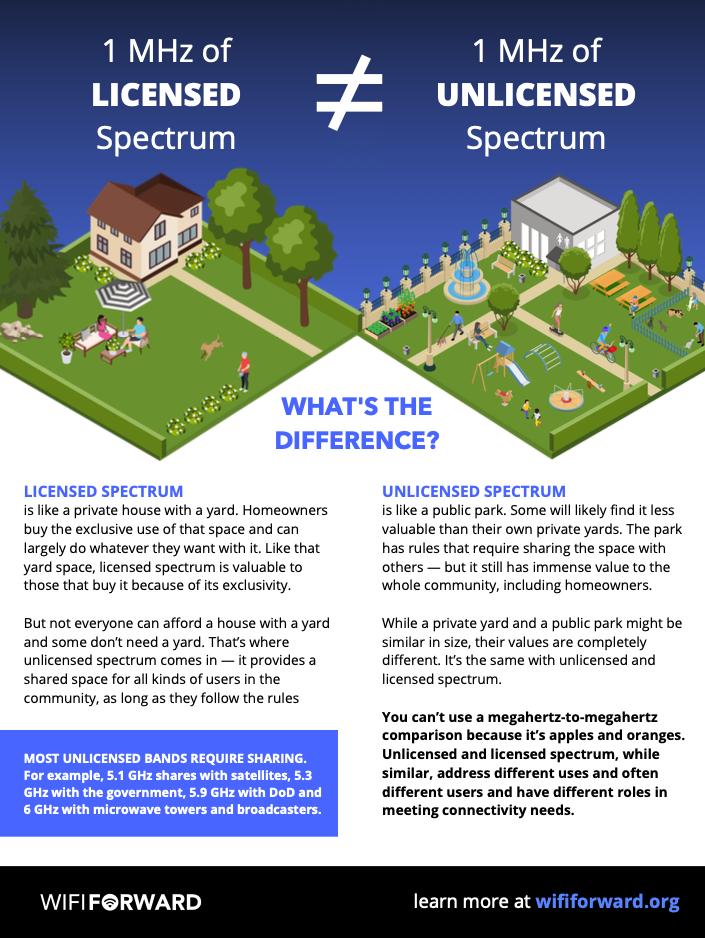You may have been wondering what licensed and unlicensed spectrum mean in terms of value.
We’re here with a new visual aid to show that 1 MHz of licensed spectrum is not equal to 1 MHz of unlicensed spectrum. But what’s the difference?
LICENSED SPECTRUM is like a private house with a yard. Homeowners buy the exclusive use of that space and can largely do whatever they want with it. Like that yard space, licensed spectrum is valuable to those that buy it because of its exclusivity.
But not everyone can afford a house with a yard and some don’t need a yard. That’s where unlicensed spectrum comes in — it provides a shared space for all kinds of users in the community, as long as they follow the rules.
MOST UNLICENSED BANDS REQUIRE SHARING. For example, 5.1 GHz shares with satellites, 5.3 GHz with the government, 5.9 GHz with DoD and 6 GHz with microwave towers and broadcasters.
UNLICENSED SPECTRUM is like a public park. Some will likely find it less valuable than their own private yards. The park has rules that require sharing the space with others — but it still has immense value to the whole community, including homeowners.
While a private yard and a public park might be similar in size, their values are completely different. It’s the same with unlicensed and licensed spectrum.
A few other ways we could think about this:
- Attending a film premiere vs. streaming it on Netflix
- Hearing your favorite band at a live concert vs. listening over the radio
- Having a pet bird vs. visiting the birds at the zoo
You can’t use a megahertz-to-megahertz comparison of unlicensed to licensed spectrum because it’s apples and oranges. Unlicensed and licensed spectrum, while similar, address different uses and often different users and have different roles in meeting connectivity needs.

